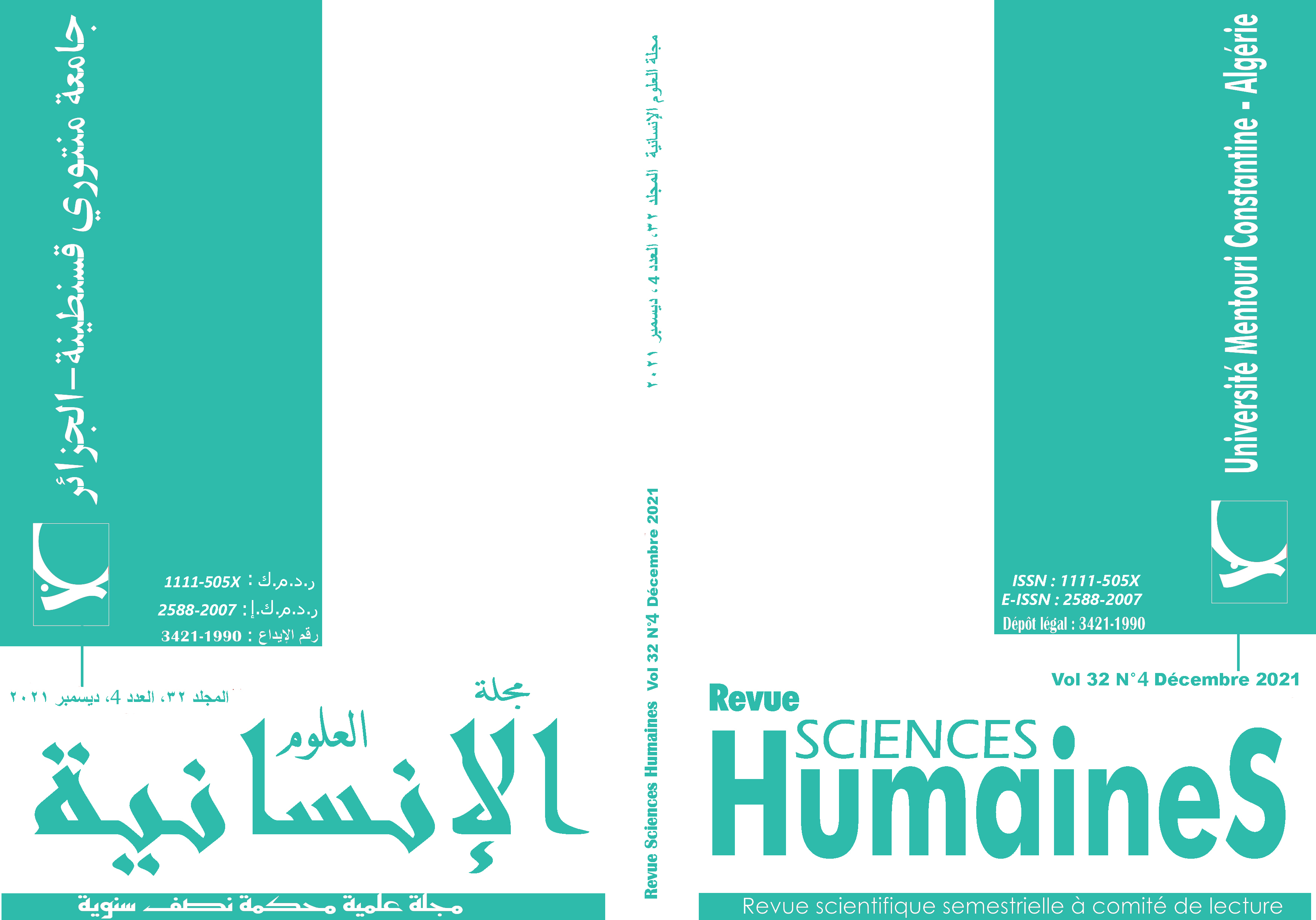تقنية الواقع الافتراضي في علاج اضطراب طيف التوحد
Mots-clés :
réalité virtuelle, interaction sociale, compétences en communication, compétences linguistiques, Compétences émotionnellesRésumé
Les troubles du spectre autistique (TSA) sont considérés parmi l'un des troubles les plus importants auxquels s'intéressent les psychologues et les pédopsychiatres dans divers pays du monde. Malgré cela, aucun traitement curatif et définitif n'a été trouvé dans ce sens, en plus de sa grande propagation, qui a peut-être doublé la crainte des familles pour l'avenir de leurs enfants. Bien que la recherche ne s'est pas arrêtée, mais s'est exacerbée. Dans ce contexte, notre recherche s’intéresse à la littérature psychologique, à travers une dizaine d'études, sur la mesure de la réalité virtuelle et son utilisation comme technique thérapeutique du TSA. Les résultats ont montré que cette technologie a un avenir prometteur en raison de l'interaction des enfants avec elle d'une part, et d'autre part, son impact positif sur le développement de certains aspects de la personnalité d'un enfant TSA. Notamment le développement des capacités interactionnelles sociales, communicationnelles.
Téléchargements
Références
APA. (2015). APA Dictionary of Psychology, Second Edition (G. R. Vandenbos, Ed. ; 2nd ed. ). American Psychological Association.
Benson, P. R. , & Karlof, K. L. (2009). Anger, Stress Proliferation, and Depressed Mood Among Parents of Children with ASD: A Longitudinal Replication. Journal of Autism and Developmental Disorders, 39(2), 350–362. https://doi. org/10. 1007/s10803-008-0632-0
Bernardes, M. , Barros, F. , Simoes, M. , & Castelo-Branco, M. (2015). A serious game with virtual reality for travel training with Autism Spectrum Disorder. 2015 International Conference on Virtual Rehabilitation (ICVR), 127–128.
Cox, D. J. , Brown, T. , Ross, V. , Moncrief, M. , Schmitt, R. , Gaffney, G. , & Reeve, R. (2017). Can youth with autism spectrum disorder use virtual reality driving simulation training to evaluate and improve driving performance? An exploratory study. Journal of Autism and Developmental Disorders, 47(8), 2544–2555.
Craig, A. B. , Sherman, W. R. , & Will, J. D. (2009). Developing Virtual Reality Applications: Foundations of Effective Design (1 edition, 1 edition) [Computer software]. Morgan Kaufmann.
Cumine, V. (2009). Autism In The Early Years (2 edition, 2 edition) [Computer software]. Routledge.
Evans, B. (2013). How autism became autism. History of the Human Sciences, 26(3), 3–31. https://doi. org/10. 1177/0952695113484320
Harris, J. (2018). Leo Kanner and autism: A 75-year perspective. International Review of Psychiatry (Abingdon, England), 30(1), 3–17. https://doi. org/10. 1080/09540261. 2018. 1455646
Mazurek, M. O. , Engelhardt, C. R. , & Clark, K. E. (2015). Video games from the perspective of adults with autism spectrum disorder. Computers in Human Behavior, 51, 122–130. https://doi. org/10. 1016/j. chb. 2015. 04. 062
Mesa-Gresa, P. , Gil-Gómez, H. , Lozano-Quilis, J. -A. , & Gil-Gómez, J. -A. (2018). Effectiveness of Virtual Reality for Children and Adolescents with Autism Spectrum Disorder: An Evidence-Based Systematic Review. Sensors (Basel, Switzerland), 18(8), Article 8. https://doi. org/10. 3390/s18082486
Newbutt, N. , Sung, C. , Kuo, H. -J. , Leahy, M. J. , Lin, C. -C. , & Tong, B. (2016). Brief report: A pilot study of the use of a virtual reality headset in autism populations. Journal of Autism and Developmental Disorders, 46(9), 3166–3176.
Parsons, S. , & Mitchell, P. (2002). The potential of virtual reality in social skills training for people with autistic spectrum disorders. Journal of Intellectual Disability Research, 46(5), 430–443. https://doi. org/10. 1046/j. 1365-2788. 2002. 00425. x
Sait, M. , Alattas, A. , Omar, A. , Almalki, S. , Sharf, S. , & Alsaggaf, E. (2019). Employing Virtual Reality Techniques in environment adaptation for autistic children. Procedia Computer Science, 163, 338–344. https://doi. org/10. 1016/j. procs. 2019. 12. 116
Smith, M. J. , Ginger, E. J. , Wright, K. , Wright, M. A. , Taylor, J. L. , Humm, L. B. , Olsen, D. E. , Bell, M. D. , & Fleming, M. F. (2014). Virtual reality job interview training in adults with autism spectrum disorder. Journal of Autism and Developmental Disorders, 44(10), 2450–2463.
Stewart Rosenfield, N. , Lamkin, K. , Re, J. , Day, K. , Boyd, L. , & Linstead, E. (2019). A Virtual Reality System for Practicing Conversation Skills for Children with Autism. Multimodal Technologies and Interaction, 3(2), 28. https://doi. org/10. 3390/mti3020028
Strickland, D. (1996). A virtual reality application with autistic children. Presence: Teleoperators & Virtual Environments, 5(3), 319–329.
Strickland, D. , Marcus, L. M. , Mesibov, G. B. , & Hogan, the potential of virtual reality in social skills training for people with child with A. spectrum disorders. (1996). Brief report: Two case studies using virtual reality as a learning tool for autistic children. Journal of Autism and Developmental Disorders, 26(6), 651–659. https://doi. org/10. 1007/BF02172354
Szatmari, P. (2003). The causes of autism spectrum disorders: Multiple factors have been identified, but a unifying cascade of events is still elusive. British Medical Journal Publishing Group.
OMS. (2019). Autism Spectrum Disorder, retrieved from https://www. who. int/news-room/fact-sheets/detail/autism-spectrum-disorders
Autism Rates by Countries Population. (2019), retrieved from http://worldpopulationreview. com/countries/autism-rates-by-country/
Téléchargements
Publié
Numéro
Rubrique
Licence

Cette œuvre est sous licence Creative Commons Attribution - Pas d'Utilisation Commerciale - Pas de Modification 4.0 International.












